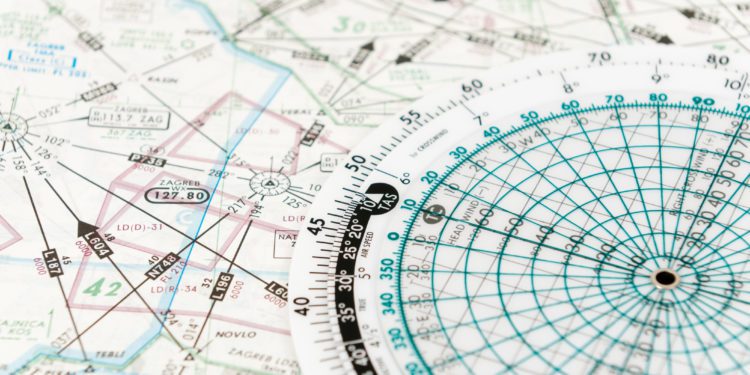Filing Flight Plan Codes: Update to Your Filing Alphabet

What?! More codes? Yep, that is correct. New codes can be used when filing your flight plan to indicate advanced Nav capabilities that can’t be described without them.
What are the new codes?
As published in the FAA AIM, Appendix 4, Table 4-4.
| Item | Purpose | Entry | Explanation |
| NAV/ entries used by FAA | Radius to Fix (RF) capability | Z1 | RNP-capable flight is authorized for Radius to Fix operations. |
| Fixed Radius Transitions (FRT) | Z2 | RNP-capable flight is authorized for Fixed Radius Transitions. | |
| Time of Arrival Control (TOAC) | Z5 | RNP-capable flight is authorized for Time of Arrival Control. | |
| Advanced RNP (A-RNP) | P1 | Flight is authorized for A-RNP operations. | |
| Helicopter RNP 0.3 | R1 | Flight is authorized for RNP 0.3 operations (pertains to helicopters only). | |
| RNP 2 Continental | M1 | Flight is authorized for RNP 2 continental operations. | |
| RNP 2 Oceanic/Remote | M2 | Flight is authorized for RNP 2 oceanic/remote operations. |
Where do the new codes apply?
At this point, the new codes only apply to the FAA (United States). This is because no other Air Navigation Service Provider (ANSP) has documented/released their plans to the public as the FAA has. Work is ongoing in the ICAO ATMRPP to publish the scheme and agreed codes which are coordinated between ICAO panels and various working papers.
What codes can I put into my aircraft’s profile?
As the location for these codes is Item 18 NAV/ field, and the NAV/ field is just a free text field, you can put these codes in your profile today. However, keep in mind that, as of right now, there is no ANSP that is utilizing these codes.
As of 06-FEB-2023, the FAA has advised they plan to implement the Z1 code into their systems sometime after 30-MAR-2023. Additionally, the FAA states Operators planning to use the STAYY SID in ZLA to have their flight plan entries ready by March 2023.
Should I still be using “RNVD1E2A1” in my flight plan?
No. The FAA AIM and AIP have removed this information from their publications. The FAA systems will still accept and process the RNVD1E2A1 coding, but remember that doing this will override your PBN codes. This means if you have RNP1 PBN codes (O1/O2/O3/O4) in your profile, the FAA will downgrade you to just RNAV1 capabilities and no RNP1 capabilities because the RNVD1E2A1 only describes RNAV capabilities. So for RNAV2 (Q, T, and Y routes), RNAV1 (RNAV SIDs and STARs), and RNP1 (RNP SIDs and STARs), it is sufficient to include the corresponding codes in PBN/.
If I already have RNP2 in Item 18 NAV/ of my current profile, do I need to replace it with M1 and/or M2?
There are currently no known operations that require the M1 and M2 codes. If your profile currently includes “RNP2” in Item 18 NAV/ field, then leave “RNP2” in there, but if you do have the necessary capability/approval (see Flight Plan Codes vs. Required Operational Authorizations), then you can include M1 and/or M2 in the NAV/ field as well. A few ANSPs require RNP2 to operate on certain airways/airspace and have yet to officially change over to using the new M1/M2 codes. Continue to use “RNP2” until published requirements change in these countries:
- Australia
- India
- Japan (In trials)
- New Zealand
- United Kingdom
Does the FAA issue Letters of Authorization (LOA) for the new codes?
Yes … you can find what required operational authorizations are available for U.S.-registered aircraft with this document: Flight Plan Codes vs. Required Operational Authorizations
What are some applicable uses?
The Z1 code will be the first to have any applicable use. The FAA already has two RNP1 SIDs (KSNA STAYY SID and KATL ZELAN SID) that require RF. When the FAA ATC systems are updated to look for the Z1 and the NOTE: Do not file-To be assigned by ATC are removed from the procedures, then airspace users will be able to file these SIDs in their flight plans.
There are other locations outside the United States where a SID/STAR has RF requirements. Some examples, such as the EGSS CLN RNP departure and VHHH multiple SIDs, are already published and in use today. However, as referenced earlier, keep in mind that no other ANSP outside the FAA has made public knowledge on using these new codes.
References
- FAA AIM, Appendix 4
- United States AIP
- FAA JO 7110.10, Appendix A
- FAA Flight Planning Information
- Australia ENR 1.10-18
- India ENR 3.x
- Japan AIRAC AIP SUP 169/22
- New Zealand ENR 1.8
- NAT DOC 007
- United Kingdom ENR 2.2 and ENR 3.3




